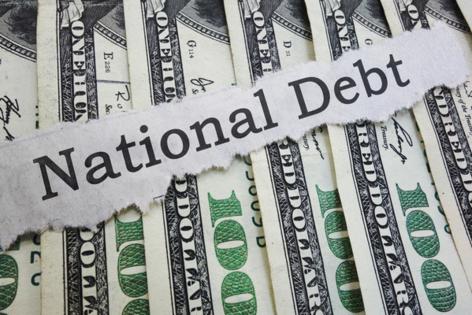
The deficit — a problem almost no one cares about — is getting worse. Unfortunately, both a majority of political leaders and the public continue to prefer ignorance over potential solutions.
In 2022, the U.S. federal government ran a $1 trillion annual deficit. Yes, you read that correctly. In just one year, the federal government spent $1 trillion more than it took in.
That will soon be considered the good ole days. This year, the annual budget deficit is expected to double to around $2 trillion. It’s one thing for deficits to spike during a major national crisis — like the initial days of the COVID-19 pandemic or a world war — or an economic downturn. The country hasn’t experienced those during the past year.
That’s left some supposed experts mystified.
“To see this in an economy with low unemployment is truly stunning. There’s never been anything like it,” Jason Furman, once a top economist in the Obama administration and now a Harvard economics professor, told The Washington Post. “A good and strong economy, with no new emergency spending — and yet a deficit like this. The fact that it is so big in one year makes you think it must be some weird, freakish thing going on.”
Furman may teach at what was once one of America’s elite institutions, but apparently he skipped Economics 101. If you spend more than you take in, you’ll run a deficit. It doesn’t matter if you’re talking about a Fortune 500 company, personal finances or the government. If the interest rate on your significant past debt increases, your payments will skyrocket too.
Both of those things are applicable here. From August 2022 to July 2023, the federal government collected around $4.5 trillion in revenue. But it spent roughly $6.7 trillion. Compared to the past year, that was a 16% spending increase and a 7% decrease in tax collections. Even the federal government can’t tax its way out of a spending problem.
Higher interest rates are one cause of the spending spike. The Federal Reserve has been raising them in a belated effort to bring down inflation. Along with home and auto loans, that has also increased the cost of servicing the national debt, which is approaching $33 trillion. The Heritage Foundation notes, interest costs on the debt went from “$350 billion in 2021 to nearly $800 billion today on an annualized basis.” The federal government will soon spend more on interest than defense.
The solution is simple, but remains politically unpalatable: Spend less. It doesn’t matter how high taxes go, if the government spends more than it collects, the U.S. national debt will continue to soar.
______
©2023 Las Vegas Review-Journal. Visit reviewjournal.com.. Distributed by Tribune Content Agency, LLC.








